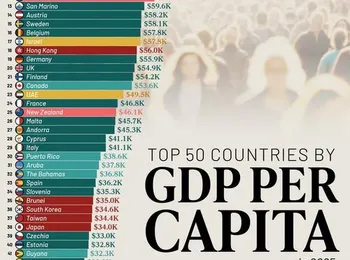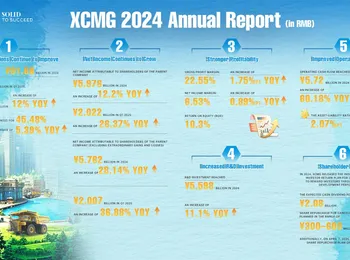US Homebuilder Sentiment Slumps to Lowest Since 2023 Confidence among US homeb buil ders experienced a significant downturn in May, plummeting to the lowest level since late 2023. The National Association of Home Builders (NAHB) Sentiment Index recorded a substantial decline of 6 points, reaching 34 – a figure considerably below the anticipated 40. This marked a concerning signal for the housing market, highlighting the challenges facing builders and the broader economy. The decline was driven by a decrease across all three components of the index, indicating widespread pessimism among builders. The measure of expected sales in the next six months fell to an 18-month low, suggesting a lack of consumer confidence and reduced demand for new homes. Simultaneously, a gauge of present sales decreased to the lowest level since late 2022, reflecting a current slowdown in sales activity. Furthermore, traffic of prospective buyers weakened, reaching the weakest level observed in 1 1/2 years. This decrease in buyer traffic underscores the difficulties builders are facing in attracting potential customers to their projects. NAHB Chairman Buddy Hughes, a builder and developer from Lexington, North Carolina, attributed the sentiment slump to several key factors. He stated, "The spring home buying season has gotten off to a slow start as persistent elevated interest rates, policy uncertainty and building material cost factors hurt builder sentiment in May." These persistent challenges – particularly high interest rates – are significantly impacting builder confidence and the ability to move forward with new construction projects. The ongoing policy uncertainty, stemming largely from fluctuating tariff issues, further exacerbates the situation, creating an environment of instability for builders. The NAHB Sentiment Index is a key indicator of the health of the US housing market, and the recent decline is a cause for concern. It reflects the challenges faced by builders in an increasingly uncertain economic environment. Understanding the drivers of this sentiment shift is crucial for policymakers and industry stakeholders alike. The index's methodology and its relationship to broader economic trends are regularly scrutinized by analysts and economists.
NAHB Chief Economist Robert Dietz offered a more nuanced perspective, noting, "Policy uncertainty stemming in large part from the stop-and-start tariff issues has hurt builder confidence but the initial trade arrangements with the United Kingdom and China are a welcome development." While the initial trade agreements with the UK and China represent a positive development, the overall impact of recent tariff actions has been negative for builders. A significant 78% of builders reported difficulties pricing their homes due to the uncertainty surrounding material costs, highlighting the vulnerability of the industry to external economic factors. This situation is compounded by the fact that new mortgage rates remain elevated compared to historical averages, placing a considerable financial burden on builders who cannot afford to subsidize the difference. The impact of trade policies on the housing market is a complex issue, and the NAHB is working to understand the full extent of these effects. The ongoing debate over tariffs and their impact on the economy is a major factor influencing builder sentiment. The industry is particularly sensitive to changes in trade policy, and the NAHB is monitoring these developments closely. The volatility of material costs further complicates the situation, and builders are struggling to manage their expenses effectively. The NAHB is committed to providing its members with the latest information and analysis on these issues.
Data released by the NAHB revealed that in May, 34% of builders reported cutting prices – the largest share since December 2023. This price reduction reflects the competitive pressures builders are facing and their attempts to stimulate demand. Additionally, the share of builders utilizing sales incentives remained steady at 61%, indicating a reliance on promotional strategies to attract buyers. However, the underlying sentiment remains subdued, driven by factors beyond just promotional offers. The persistent challenges faced by potential homebuyers – high mortgage rates and a lack of affordability – continue to dampen demand, contributing to the overall decline in builder confidence. It’s a complex situation, and the industry is grappling with headwinds that require careful navigation. The NAHB is conducting ongoing research to understand the factors driving price reductions and the effectiveness of sales incentives. The industry is adapting to changing market conditions, and builders are exploring a range of strategies to stimulate demand. The NAHB is providing support and resources to its members as they navigate these challenges. The industry’s response to these market dynamics will be crucial in determining the trajectory of the housing market. The NAHB is committed to fostering a stable and sustainable housing sector.
Ultimately, the decline in builder sentiment reflects a broader economic reality. The housing market is highly sensitive to interest rate fluctuations and economic uncertainty, and the current environment presents significant challenges for builders. The industry’s response will be crucial in determining the trajectory of the housing market in the coming months. The situation underscores the importance of addressing the underlying issues – including high interest rates, policy uncertainty, and material cost volatility – to restore confidence and stimulate sustainable growth within the housing sector. It’s a reminder that the health of the housing market is inextricably linked to the broader economic landscape, and careful monitoring of these trends is essential for informed decision-making. The NAHB is committed to providing its members with the tools and resources they need to succeed in this challenging environment. The industry’s resilience and adaptability will be key to overcoming these obstacles and ensuring a strong and vibrant housing sector. The NAHB’s ongoing research and analysis will continue to inform its policy recommendations and support its members. The housing market is a vital component of the US economy, and the NAHB is dedicated to its success.
























